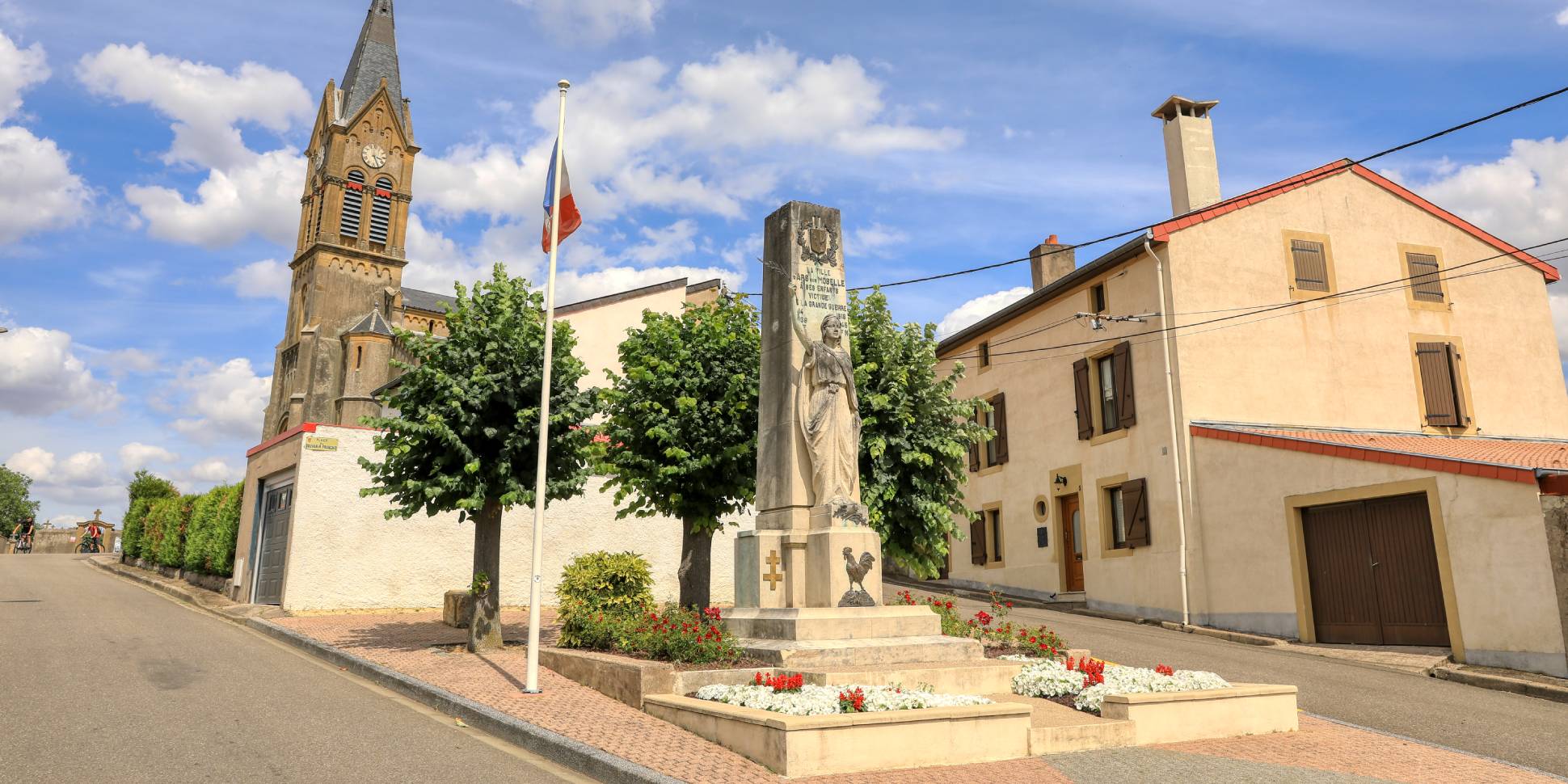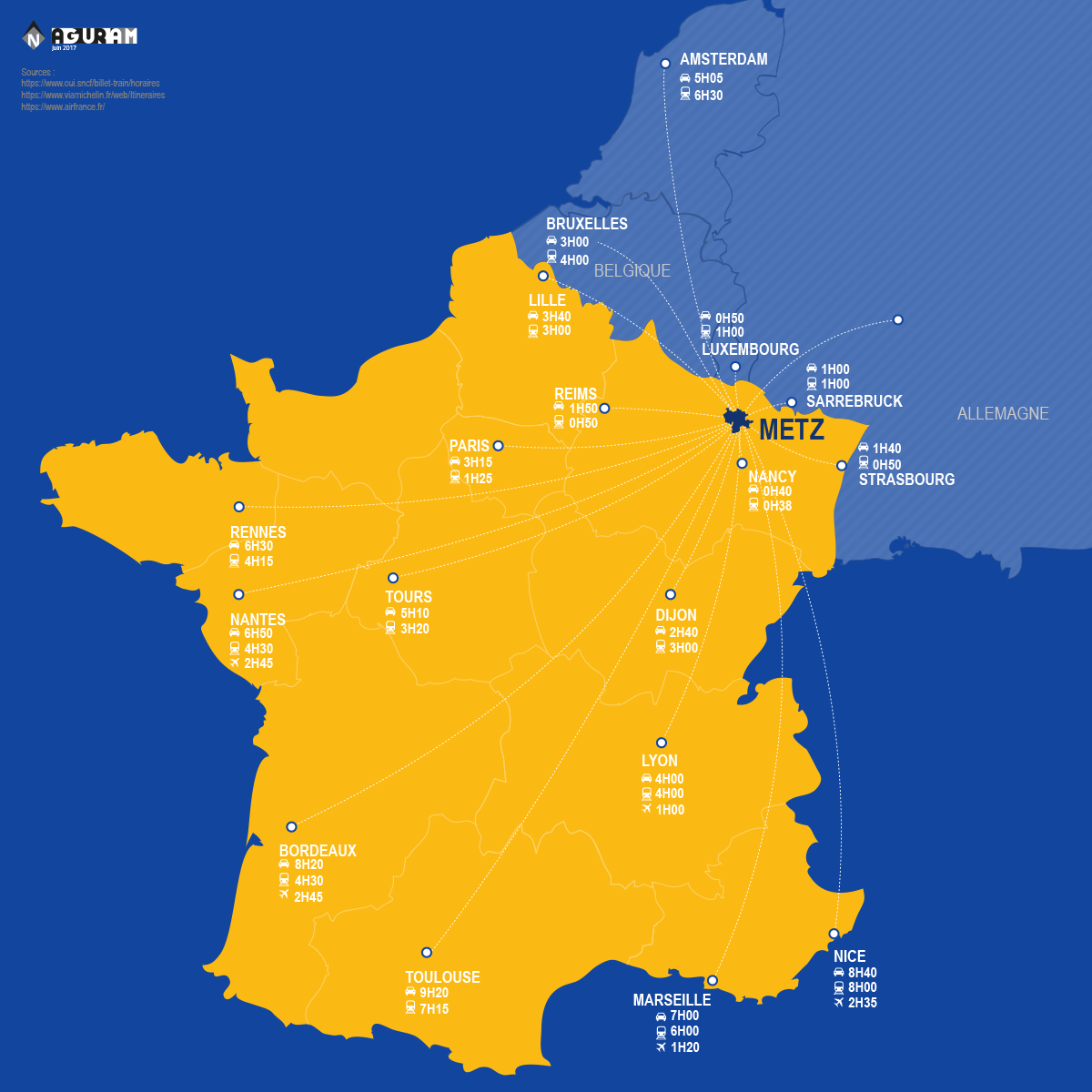Ars-sur-Moselle is a city with Gallo-Roman origins which emerged with the construction of the Roman aqueduct (4th century A.D.) which supplied Metz and its thermal baths with water.
In the medieval era, it was an enclave of the Eveché de Metz, renowned for its wine production and its paper mills. The Saint-Martin fortified church was built during this period.
The city saw a real industrial boom in the 19th century due to its iron mines.
Fort Driant was built just before World War I. It withstood attacks from the American army in 1944.
Discover our heritage
Historic heritage
- Saint-Martin fortified church: built in the Middle Ages on the fortified city site, it was destroyed in 1807, and then rebuilt in 1816.
- Saint-Roch chapel: it dates back to 1867, and was built following a pledge made during the 1866 cholera epidemic.
- The Protestant church: Rue Wilson. It was built in 1854.
- Doorway to Maison Morlanne: Renaissance doorway with Corinthian columns, friezes and coat of arms, classed as a Monument Historique (Historic Monument). Etienne Pierre Morlanne, founder of the school for wise women, created a maternity ward for young mothers in Ars in 1593, with the congregation of the sisters of the Christian Charity.
- Roman arches: seven arches which make up the Roman aqueduct run along the axis of a water reception basin. The aqueduct supplies water to Metz and the thermal baths in the amphitheatre district.
- Fort Driant: The fort was built in 1900 on an elevated ridge of the Moselle riverbank, with an altitude of 360 m. At the time it was known as Feste-Kronprinz. In 1944 this fort resisted three months of attacks by the 3rd American army under the orders of General Patton.
Natural heritage and walks
- Vallée de la Mance: a charming little stream which travels through a cool valley before crossing the city. There we can find rare trees and plants, such as edelweiss.


